Jérôme Clementz is the very definition of a top-level enduro athlete and the friendly face of world enduro. He was also our first Enduro World Champion – but now that we heard on the grapevine that he is hanging up his EWS boots, it was time to catch up with the people’s champion to find out what is going on.
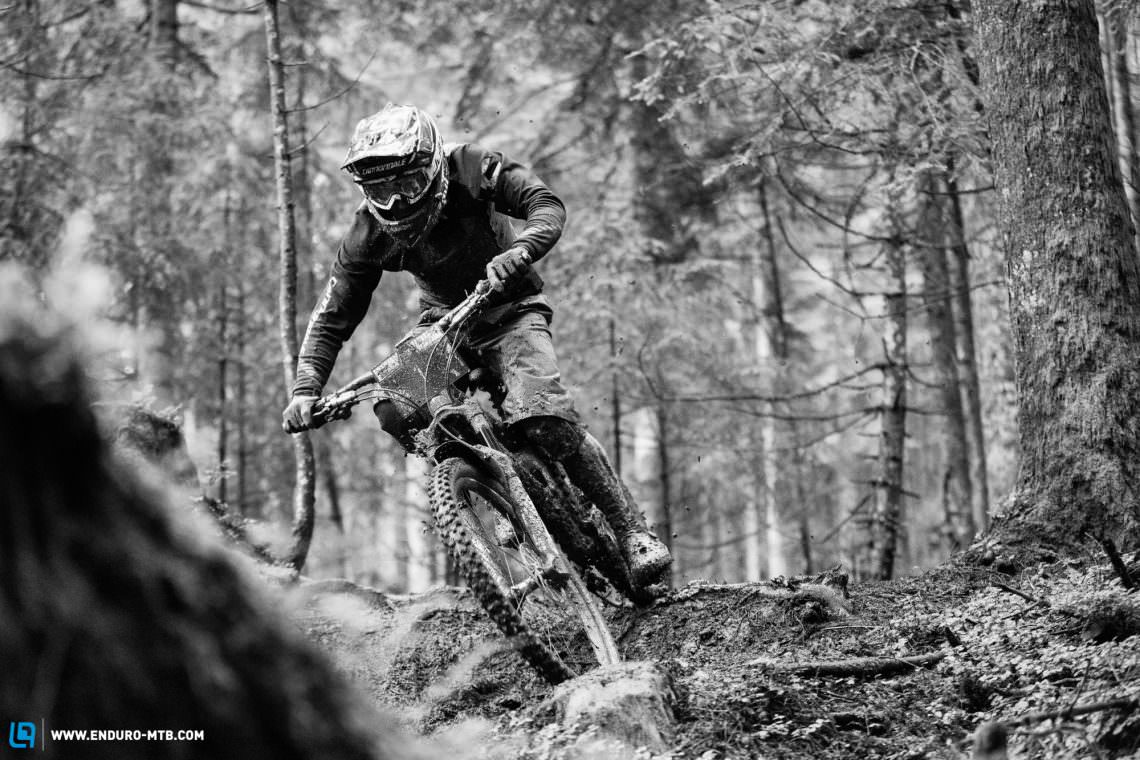
Jérôme is the man who first painted enduro the colour yellow and has probably drunk his own body weight of podium champagne. Always a threat to the podium, always fast: there is no rider more recognisable on the trail than Jerome Clementz. His distinctive style – nicknamed ‘the turtle’ by his mechanic – with head tucked, body forward, and riding so smoothly it looks like he is on a different trail from everyone else, has become synonymous with the EWS, gracing more covers that the Kardashians.
The cycling community was surprised to hear of your “retirement” from full-time racing. Are you hanging up your boots, or will we still see you on the start lines?
First of all, I would like to point out that I never used the word “retire” – I said that for 2018 my main focus will not be the racing. My plan is to work and collaborate more with my partners on different areas of the sport and spend more time enjoying riding. I’ll still be on my bike and take part in some races, but I’ll not dedicate as much time for this as before. I will not race EWS, as I believe that for this level of racing you need to be 100% dedicated if you want to perform and enjoy the event.
“The level of racing is getting higher. I know my strengths and weaknesses, and to keep getting faster it involved more risk that I wasn’t ready to take.”

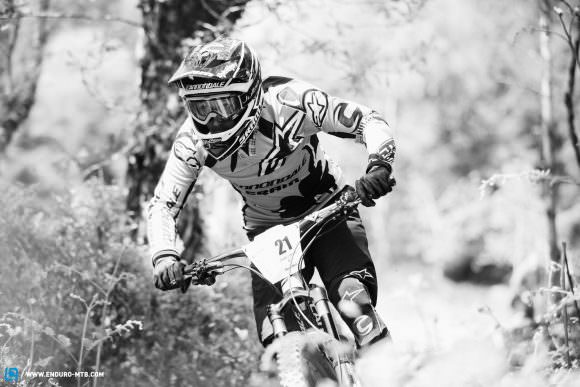
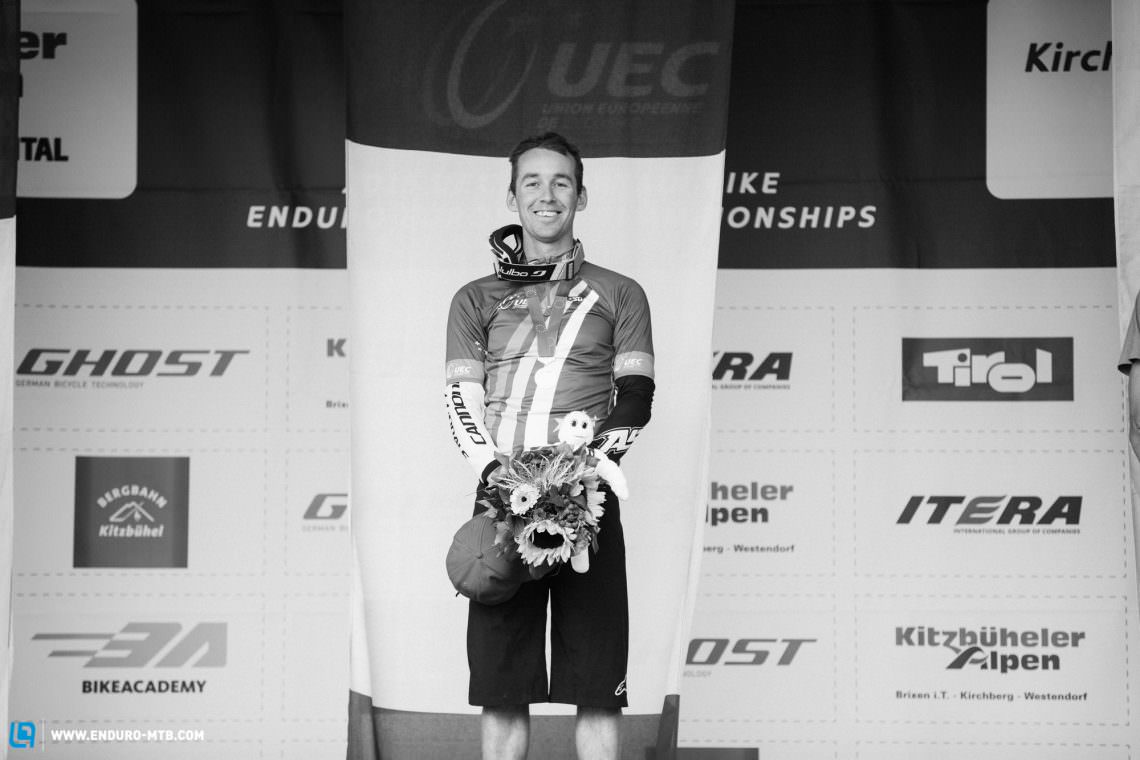
You have been at the top of the game from day one and ranked fifth overall last season, so what’s prompted you to change your focus?
There are many different aspects to my decision. Firstly, I always do things that motivate me, and I have started to feel that there is more to mountain biking than just racing. I’ve enjoyed focusing on performance for many years, especially with the new challenges EWS made us face, but to keep up with the best you need to think only about the racing if you want to stay at the top. I enjoy traveling, road-trips, discovering new places, working on the development, helping riders to progress, and sharing my passion with other riders and dealers or distributors. I thought I was missing out on these aspects and didn’t want to skip them anymore. On top of that, the level of racing is getting higher. I know my strengths and weaknesses, and to keep getting faster it involved more risk that I wasn’t ready to take. There were too many things evolving that don’t fit in my vision of MTB (like more routine, more gym sessions, and more shuttle sessions). Rather than doing this as if it was my job, I prefer to stop and try to create a nice transition from racing full-time to ambassador, or find a position in the bike industry and a project where I’m fully committed.

As one of the original enduro pioneers, you have been on the front line since the very beginning. Has the sport matured in a way that you had hoped?
When it all started, I didn’t think it would grow that quickly or become so big. When things change, you have to adapt. I think the good point is that the sport is still run by people that are passionate and that the quality of riding remains their main focus and motivation. On the other side, there’s some stuff I like less, but it’s a part of the deal when the sport is growing. It’s getting more serious, and some organisers charge more because it’s trendy and they want some benefits.
It’s certainly getting tighter at the top; it used to be the same faces on the podium, but now the top ten seems to be shifting constantly. What are your thoughts on this?
It is definitely. The gaps are closer and now you need to be 100% from the first to the last stage. It makes the racing more interesting and intense; more risk is involved, as every second counts. More riders are now on proper teams and can train well, so now there are probably thirty riders that can achieve a top ten at an EWS. I think this is really great for the sport and for the show. For us riders, it’s a bigger motivation.

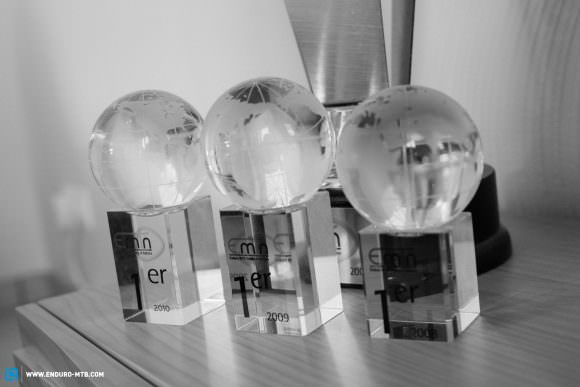

“Now we don’t have as much advantage compared to the young kids. On top of that, they are fearless and motivated to make their place at the top of the sport.”
In the beginning, enduro was a game won by experience, but look at the juniors now! Riders like Adrien Dailly are coming through the ranks so fast… what do you think has changed?
When the EWS started, the older riders had more experience and could play with this advantage, but now most of the riders have five years of enduro and EWS experience. Now we don’t have as much of an advantage compared to the young kids. On top of that, they are fearless and motivated to make their place at the top of the sport. I like the fact that the kids now don’t switch from DH or XC for enduro, but they choose enduro as what they want to do from the beginning.
You have had quite the career. What has been your racing highpoint?
Of course being the first EWS champion is something very special and will remain one of my most cherished highlights, but overall what I’m really proud of is that during more than ten years – from my win at the Megavalanche in 2005 to now – I’ve managed to adapt and still be one of the main guys of the circus. I won Megas, Trans races, short stages, long stages, in the dry, in the wet, on different continents and different kind of tracks. For me, this is what I will remember from my career.
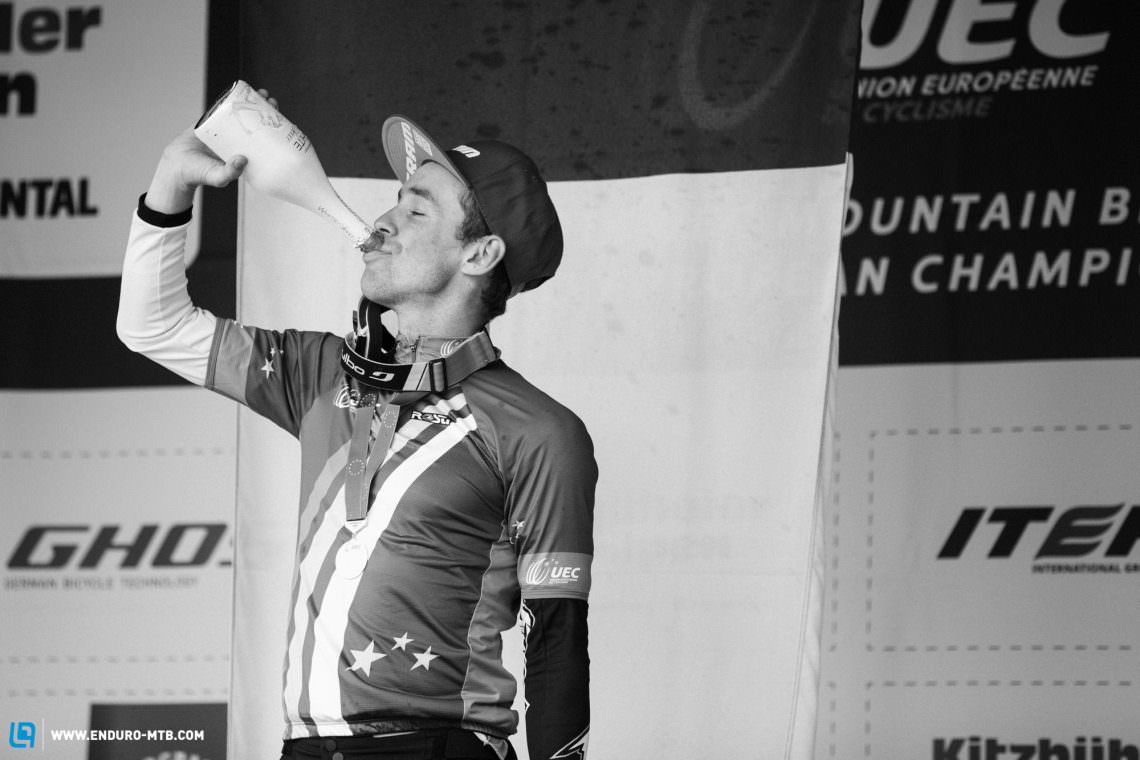
What about your favourite race? Is there a particular event that you most enjoyed?
I think my first experience of Trans Provence will be one of my favourite moments. To ride in an unknown place, point-to-point and having to face different terrain for an entire week while sharing the adventure with seventy riders left some great memories for me. I say the first year because the vibe was really relaxed, the racing feeling wasn’t really there, and it was new for everybody.
I always loved popping into your pits at races to chat with Matteo your mechanic – he was the king of coffee! Will you still work with him?
Matteo will remain the Cannondale team mechanic and work with Marco. I’ll probably still be asking him to check out my bike and will hang out with him sometimes, but he won’t be my official mechanic anymore.
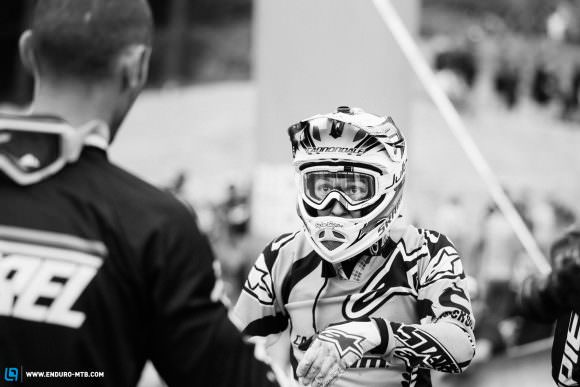
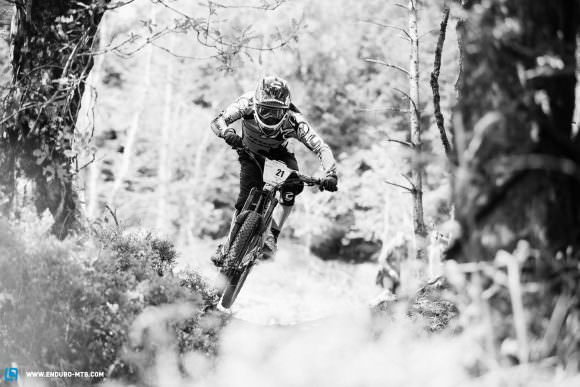
Will it be nice to enjoy this winter without the stress of an upcoming season?
It will. Right now, after this big season I need some rest, and not having to stress about starting training again is nice. I can recharge the battery and enjoy some holiday time. I’m still busy on some projects though: I just came back from Népal, and next I’m heading to Chile. Not having to focus on the fitness program allows me to do some more adventures like this. But even though I may take some holidays I still want to stay fit, so I’ll force myself into a training program to stay competitive. (laughs)
So, thinking about those who want to follow in your footsteps, many upcoming racers face challenges when it comes to financing a full season of racing. Can the industry support more pro racers?
I think the fans and brands in MTB are interested in results, but also in personality. As an athlete I believe that you have to create your personage and share this with the public. I am not saying you have to fake it, but telling people who you are and giving them an insight is essential. Of course, there’s an audience and some interest for riders with good results, and I think that this is where brands want to invest money to show the capabilities of their bikes. However, compared to other disciplines, enduro has a grassroots base where riders and fans want to have fun, so results may not be enough – you are often requested to do more than just racing. It’s always tough to get some financial support, and as a rider you need to think about why a brand should give you money, what you can bring to them, and what your project is.
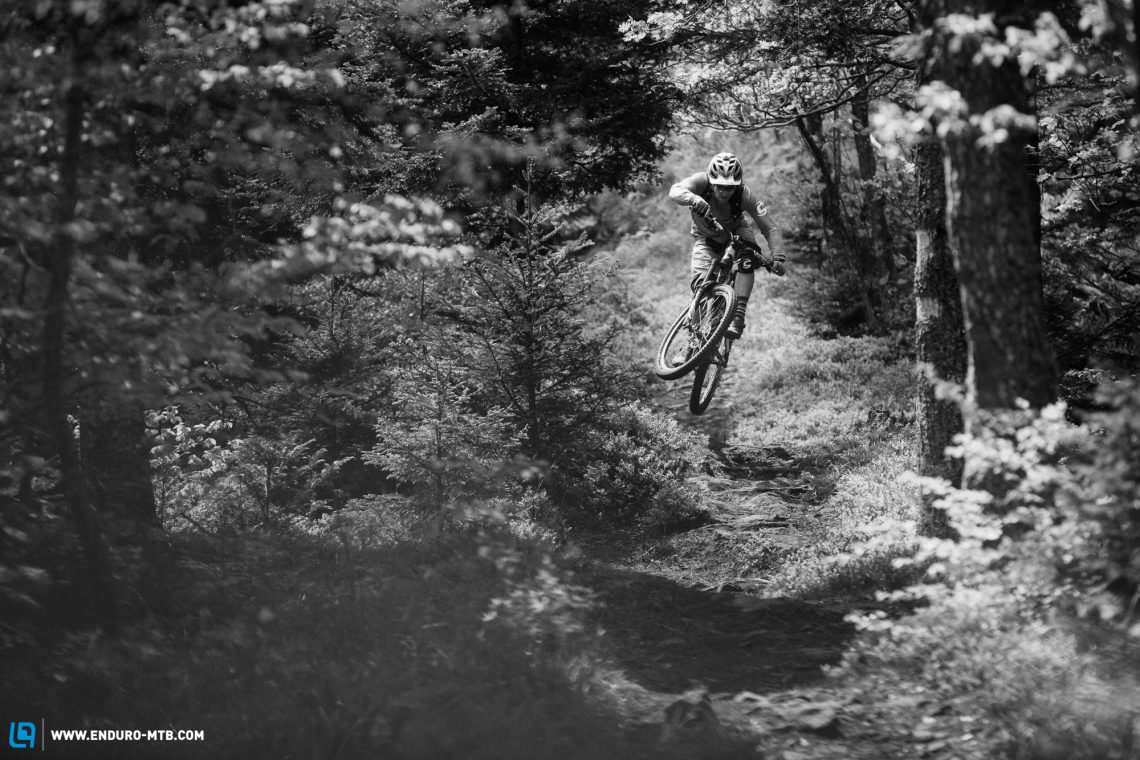
So, let’s get a little more topical: as a rider who has seen enduro from start to finish, does the EWS need doping control?
When you look at other sports, you can tell that you can’t trust people when there is money involved – when there is fame, glory, and a title. Doping control would make things more clear and remove some doubt, so it could only be a good thing. I don’t think there is doping in enduro, but I prefer fact over belief.
To keep momentum, what are your thoughts on how the sport of enduro should continue? Should there be more structure with national series, etc?
France is a great example of how things should evolve, with one French Cup labeled by the French Federation and a lots of more relaxed local events. There are races for different people, whether they are looking for serious events or fun. At an international level, to allow the sport keep growing I think the involvement of UCI could be a good point. I don’t think the UCI should run the events, as the EWS team do a great job, but it would bring an official status to the sport, and help regarding rules enforcement and TV coverage. Also, the UCI can help to give an athlete an official “Pro” status and get them benefits if they are studying, and allow them to have more support. At the EWS level, to keep growing I think they need to define where they want to be in five years and what their vision is regarding practice, course walking, mass events, pit sizes, etc. Stability and clear vision would help riders, brands, and venues to commit and have a clear vision of the project and situation.



We will certainly miss you on the circuit! What’s next for you, and what do you have planned for next year?
I’m still working on my schedule, but I’ll work with my partners to support them in the events they have organized like sales meetings, trade shows, and dealer meetings. I’ll keep producing video and photo content during my trips and experiences. Of course, I’ll also take part in some races like a Trans Race or some nice one-day enduro events. Basically, I’ll still be very busy! (laughs)!
Thank you very much Jerome, and all the best!

This article is from ENDURO issue #031
ENDURO Mountainbike Magazine is published in a digital app format in both English and German. Download the app for iOS or Android to read all articles on your tablet or smartphone. 100% free!

Did you enjoy this article? If so, we would be stoked if you decide to support us with a monthly contribution. By becoming a supporter of ENDURO, you will help secure a sustainable future for high-quality mountain bike journalism. Click here to learn more.
Words & Photos: Translation: Trevor Worsey, Christoph Bayer











